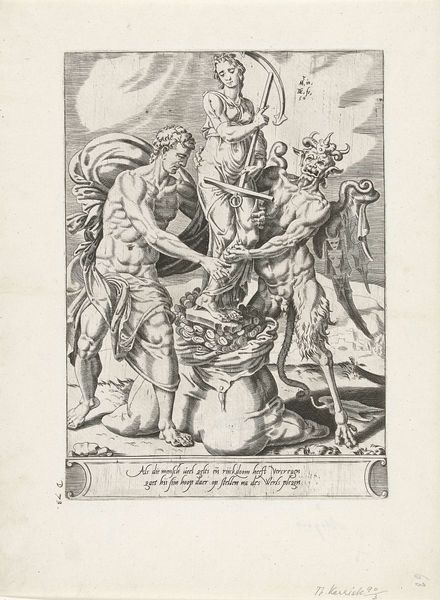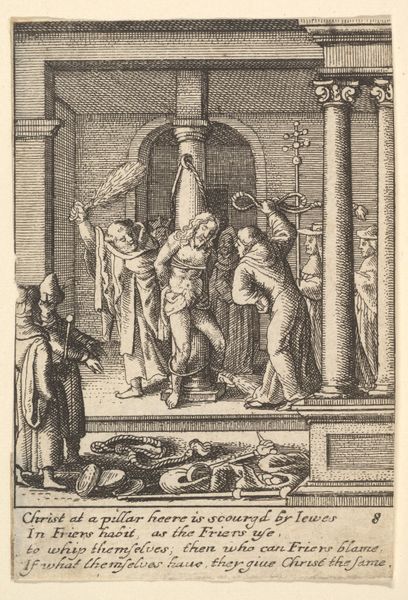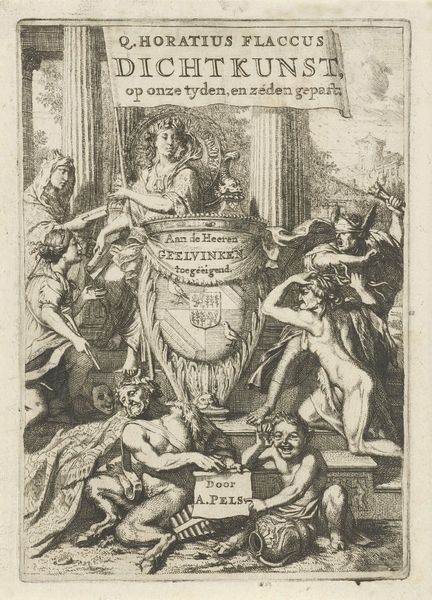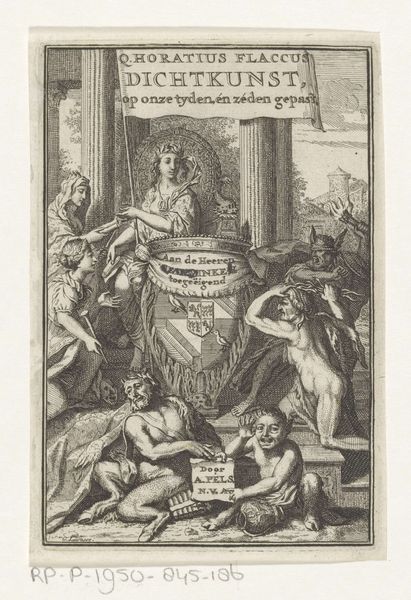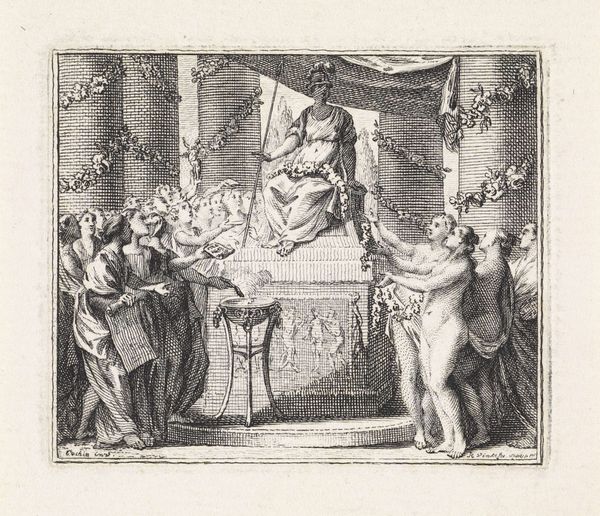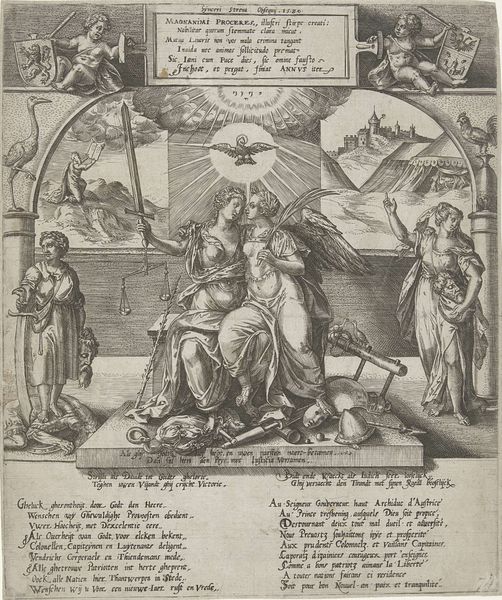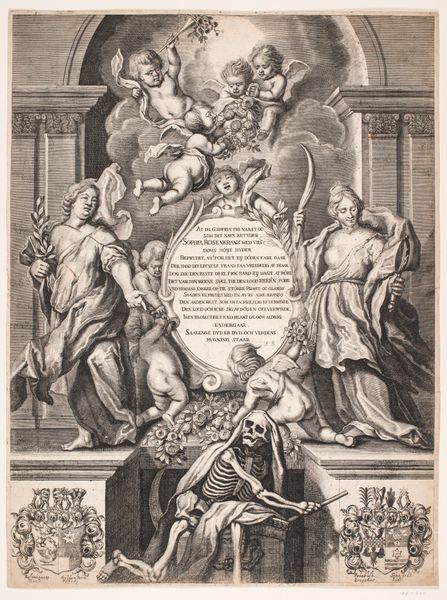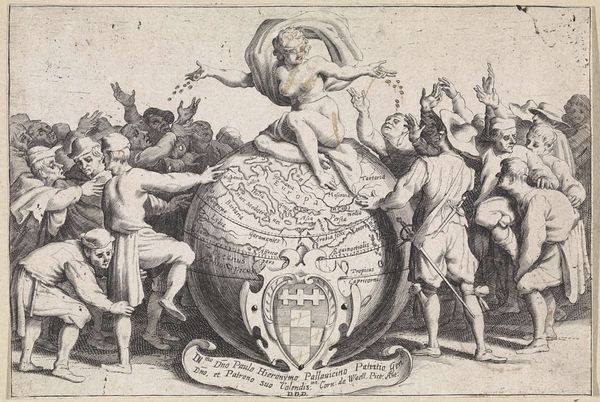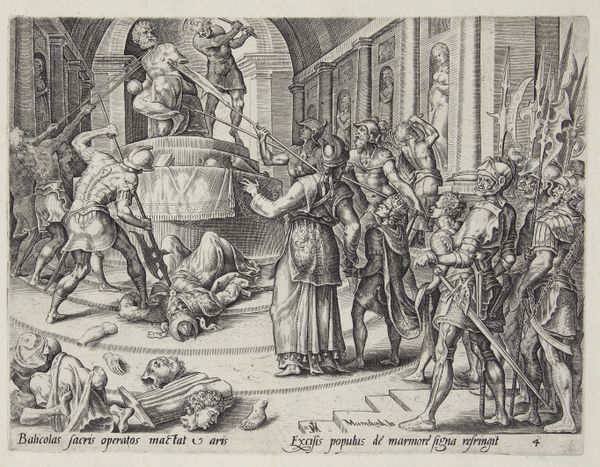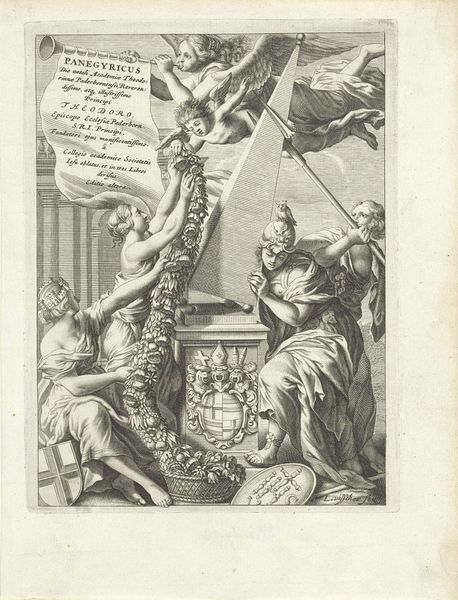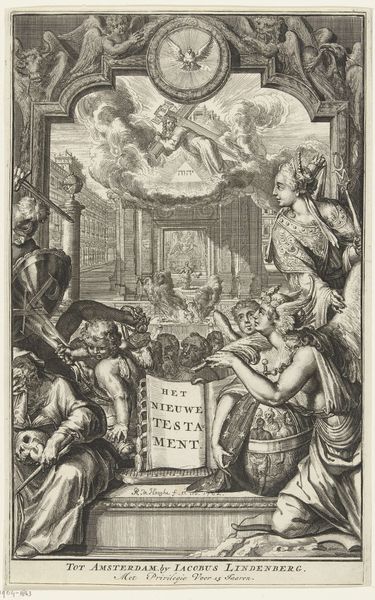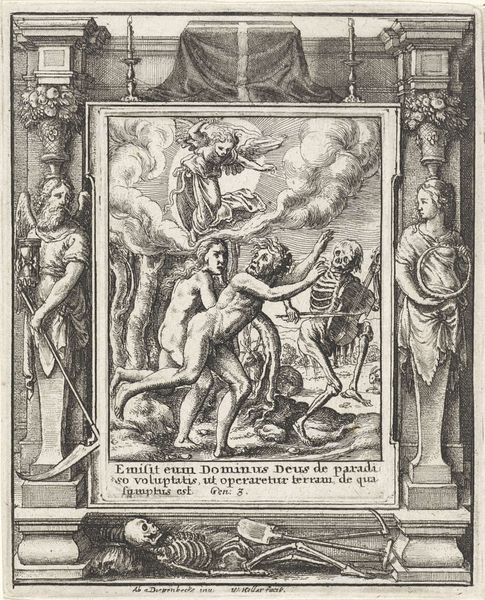
print, engraving
#
allegory
# print
#
landscape
#
figuration
#
line
#
history-painting
#
northern-renaissance
#
engraving
Dimensions: height 194 mm, width 170 mm
Copyright: Rijks Museum: Open Domain
Editor: This engraving, "Wachters op de muren van Jeruzalem," from 1579 by Wierix and displayed at the Rijksmuseum, is quite striking. The figures seem posed and allegorical, almost like characters in a play. What do you see in this piece beyond the surface level? Curator: Absolutely. Wierix is engaging in the visual language of his time, steeped in religious and political anxieties. Consider the placement of each figure: we have those ready to fight, a figure vigilant in a tower, and one praying in piety. It suggests a community under threat, reliant on military, civic, and spiritual fortitude. Do you think these figures equally carry weight in the message, or do you see one having greater symbolic value? Editor: The figure blowing the trumpet atop the tower is captivating. It's hard to tell if they are warning or inspiring. Perhaps both? Curator: Precisely. Consider this work emerging during the Dutch Revolt, a period where civic and religious identity was actively being constructed. That trumpet becomes a call to action, perhaps aimed at Protestants facing persecution. Does situating the artwork within the tumultuous 16th century allow us to understand Wierix's own biases, conscious or not? Editor: It really does contextualize the urgency embedded in what I initially perceived as just a historical tableau. I guess understanding the historical backdrop transforms my reading of each figure. Curator: Exactly! Art isn't created in a vacuum. Exploring the social and political undercurrents allows us to move past mere description to critical interpretation and an intersectional understanding of the work. Editor: This really opened my eyes on the contextual layers within the artwork. Curator: And, for me, it is inspiring to view how historical understanding challenges preconceptions and inspires fresh perspectives on art.
Comments
No comments
Be the first to comment and join the conversation on the ultimate creative platform.
